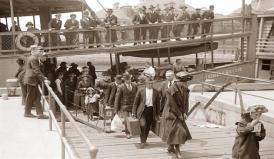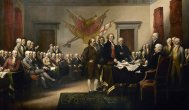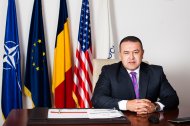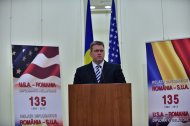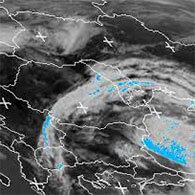Romania and the United States of America 135 Years since the Establishment of Diplomatic Relations. Remoteness and Closeness
Romania and the United States of America: 135 Years since the Establishment of Diplomatic Relations. Remoteness
04 Jul, 2015 00:00
ZIUA de Constanta
 2637
Marime text
2637
Marime text
 2637
Marime text
2637
Marime text

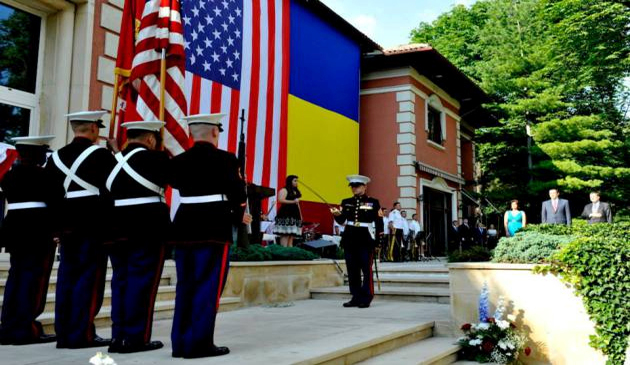
On August 12th, 1880, in Bucharest, Eugene Schuyler was transmitting the approval of the Romanian Government for the Secretary of State William Evarts to represent the interests of the United States as concerns the newly independent state. He had been named Consul General and diplomatic agent as of June 14th, which was considered to be the debut of the official relations. Thusly, for 135 years, the diplomatic relations between the two states were subject to a continuous attempt to knit closer and harmonize interests. The short periods when the diplomatic relations were absent (1941-1946) or when they were influenced by conflicts (the 1950’ and 1980’s) cannot modify the positive foundation on which they were built.
The interest had by America towards the Romanian space did not begin with the official recognition, but much earlier, immediately after the Crimean War, when the US appointed a consul in Galati, which was a strategic area with huge potential, in the context of having the European Commission of the Danube operating there and enabling trade on the Lower Danube.
The bilateral relations develop, including by signing trade agreements in the 80’s, and American diplomats are to grant special attention to Romanian problems, up until the First World War, including the situation of Romanians on Austro-Hungarian territory and the views of Bucharest on the matter.
Short of being the most important economic partner in the first half of the 20th century, USA has, however, involved itself in key-sectors, such as oil industry, or even telecommunications, as was the case in the interwar period.
We will say that, particularly in the 20th century, the American space was fascinated by Romanian intellectuality and public opinion. Remoteness made for an impossible territorial dispute. However, the breach of the American way of life into Romania, by those who chose another life by emigrating, has built a bridge between the two societies. The same emigration endorsed, as support was needed in 1917-1918, the cause of the Romanian union, which was also supported by American representatives arrived in Bucharest. This was one episode of this bilateral history, which had a special significance and thrill. In turn, the American representatives experienced the deep sympathy shown towards them in Bucharest, even during the Second World War, when the options were totally opposite.
This fascination with monumentality, mechanization, efficiency, punctuality and honesty can be found round the clock in cultural key men, who have had an opportunity of visiting the American society (here we can mention our great historian, Nicolae Iorga, who was not the only one to walk this path of enchantment).
“The American experience” was tried on for size (and internalized at the top of the personal values’ hierarchy) even by numerous scientists, over a short period of openness, mid-70’s, when they could benefit from colossal research and information opportunities. Regardless of the political regime (the tour of Queen Marie of Romania in 1926 fascinated the American society, making for a warm welcome and much admiration), the leaders of the two countries met in Bucharest and Washington, Romania being the second country in this area (after Turkey, who hosted five such meetings) to be visited by four American Presidents (Richard Nixon, Gerald Ford, Bill Clinton, George W. Bush). This all highlights the special attention given to Romania in various geopolitical contexts and even more so, in the contemporary world. The Romanian-American relationship during the post-war ideological confrontation was special, overcoming restrictions of this nature, by the beginning of the ninth decade.
Today, Romania and the Unites States are developing a Strategic Partnership, share the same visions and are collaborating on various plans, in order to face the challenges in the international environment. The two states have known an escalation in commercial trades and important American companies are present in the Romanian business field. More importantly, the American culture and educational model can be found and are adopted in pre-university and university campuses, as young people’s disposition to become aware of “the American way” is quite impressive. As are, for that matter, the performances of those who choose a career of academic and professional training in the USA.
PhD Associate Professor Emanuel PLOPEANU,Dean of the Faculty of History and Political Sciences, “Ovidius“ University Constanţa
Urmareste-ne pe Grupul de Whatsapp
Comentarii
 Fondul Documentar Dobrogea de ieri și de azi
Fondul Documentar Dobrogea de ieri și de azi







